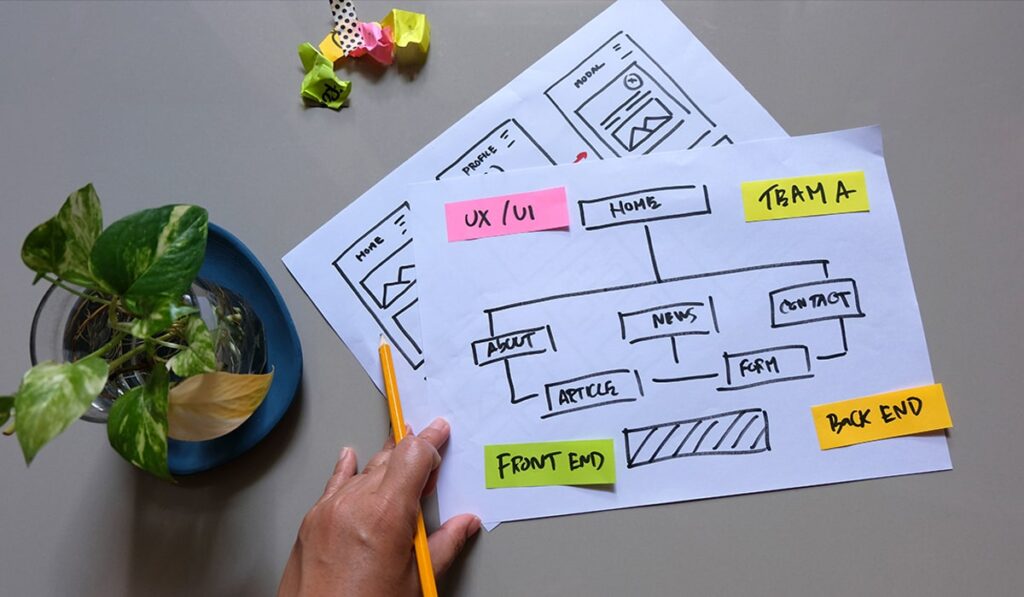

In the current digital landscape, user experience (UX) is a critical component determining the success of any project. It’s more than just creating an appealing design—it’s about ensuring a seamless and satisfactory journey for the user. Understanding the essence of UX design is pivotal in elevating your website to new heights of success. World-renowned brands master this unique art.
Are you a digital entrepreneur interested in creating a seamless user experience for your users? We’ve got you covered. This piece will discuss the secrets of exceptional user experience.
What is User Experience?
User Experience, often called UX, encapsulates a user’s interaction with a website, product, or system. Examining closely reveals that user experience centers on understanding user emotions and behavior while navigating through a website or mobile application. UX quality is dependent on how visitor’s ease of use platform, better access to its features and satisfaction. UX is a broad concept that describes the journey every user takes when they use your website.
Moreover, the goal of user experience is to ensure that users have a favorable interaction with a website. However, it’s a fairly complex process that encompasses the project idea stage to the final website. UX is a great idea to provide structure and guide the decision-making process of your website’s users.
Benefits of UX Design for Your Project
Implementing robust UX design holds numerous advantages, including;
- Increased User Satisfaction: It fosters increased user satisfaction, customer loyalty, and retention.
- Better Conversion Rates: A well-designed UX contributes to higher conversion rates, reduced bounce rates, and positively impacts a project’s bottom line.
- Enhanced User Engagement: Positive UX encourages users to interact more frequently and intensely with the website, increasing engagement and time spent.
- Improved Brand Loyalty: Good UX fosters a positive perception of a brand or product, leading to increased trust and loyalty among users.
- Reduced Support Costs: A user-friendly experience decreases the need for customer support, lowering associated costs and resources.
- Increased Productivity: In business applications, good UX results in increased productivity and efficiency, reducing the time required for users to complete tasks.
- Competitive Advantage: Superior UX can differentiate a website or service in a crowded market, providing a competitive edge.
- Reduced Errors and Confusion: A well-designed user experience minimizes user errors and confusion, resulting in a smoother and more enjoyable interaction.
What is Good UX Design?
Good UX design isn’t merely about aesthetics; it combines functionality, usability, and an intuitive interface. This concept focuses on providing a seamless, easy, and enjoyable experience for the users. It also involves extensive user research, empathy, and a keen understanding of human behavior to create designs that align with users’ needs and expectations.
Extensive research shows there are five elements of good design. An interesting thing to note about UX design elements is that they are independent. Each process is unique but is built on top of each other. These elements were defined by expert user experience designer – James Garett. They include;
Strategy
This element of UX design is the most abstract aspect of the project. Strategy refers to the decision-making process for product designers. Brainstorm, design unique objectives and note down how to achieve them. These objectives should highlight the goals of website developers and users’ expectations.
Scope
Scope is the following abstract UX element to consider. It refers to the website’s features, including essential details to communicate to users. Here, web designers are expected to list the functional specifications of the website. They are also likely to create content requirements for more effective communication with users.
Structure
The Structure clearly defines navigation elements of the new website, including the location of each page and their subsections. Web designers are expected to represent information architecture and user interaction with the product. At this stage, it makes sense to brainstorm on likely ways users will interact with the website and how it will respond.
Skeleton
The Skeleton refers to the framework of the new website. This aspect relates to where the navigation elements, such as tabs, will be added to each page. Here, UX designers will create prototypes and wireframes that organize different parts of the website, including its text, buttons, images, and links. The website skeleton is laid out to ensure players can easily and quickly navigate the web page while maintaining an in-depth understanding of the different page elements.
Surface
The Surface of UX refers to the final stages of the new website. Your website should effectively communicate your brand message to visitors without causing an overwhelming effect. Let your aesthetics and visuals do the talking. Many brands adopt the knowledge of color effects on emotions to build their platform.
How Can We Help
Still here? You’re definitely looking for something extra. Would you like to apply the knowledge you’ve gained to enhance your website but lack the necessary technical skills? We’ve got you covered. Premia TNC specializes in assisting entrepreneurs in creating an optimal user experience for their audience. Our distinctive approach involves direct communication. This involves directly consulting with clients.
Following discussions with your brand, we will collaboratively create the website. Our experts are readily available to discuss any facet of your project. Premia TNC excels in delivering a thorough service to assess UX designs. Crafting a robust UX design not only elevates user satisfaction but also contributes to the success and growth of businesses. Get on UX-powered bandwagon today!
FAQs
Q1. Why is UX design crucial for a business?
A: UX design directly impacts user satisfaction, increasing loyalty and higher conversion rates. It's pivotal for a business to differentiate itself and retain customers.
Q2. How does user research impact UX design?
A: User research provides invaluable insights into user behaviors, preferences, and pain points, allowing designers to create solutions tailored to users' needs.
Q3. Can good UX design save costs for a company in the long run?
A: Yes, by reducing the need for extensive revisions and rework. Allocating resources to UX can result in a decrease in long-term development expenses.





















